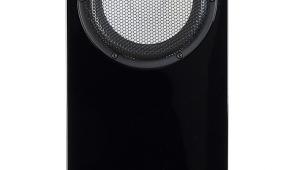Duevel Venus Loudspeaker

 Still going strong after 20 years, the Venus is nothing if not the ambassador for the room-friendly 'omni'
Still going strong after 20 years, the Venus is nothing if not the ambassador for the room-friendly 'omni'
Mention 'omnidirectional' and most worldly-wise audiophiles will remember seeing MBL's remarkable Radialstrahler loudspeakers at one hi-fi show or another. Once seen and heard they are not easily forgotten, but they are also devastatingly expensive! By the same token, affordable omnidirectional speakers have never quite made it into the mainstream of hi-fi despite Sonab being a major player back in the 1970s and Canon's models from the 1980s also finding favour with many listeners.
Fast forward a few decades and the only company I can think of that's concentrated its resources on sensibly-priced omnidirectional speakers is Duevel. The Venus compact floorstander we have here is the middle model in its five-strong range. It retails for £3995 in standard finishes that include Black, Macassar, Maple and Padouk (which is similar to rosewood), although others can be specified for a £250 premium.
Based in Germany, Duevel is the brainchild of Markus and Anette Duevel. Markus is a trained electronics engineer who originally started out developing software to simulate the behaviour of loudspeakers for other companies. Specialising in horn configurations, the development of his own designs followed as he gravitated towards omnidirectional topologies as a way of overcoming what he saw as the 'cupped hands' distortion afflicting horns.
Planets Of Sound
The first loudspeaker to bear the Duevel name was the Jupiter in 1997 and this included a horn-loaded omnidirectional 4.5in titanium midrange/tweeter above a 12in bass driver. The Venus followed in 2000 – the current Venus, Sirius and Bella Luna all being descendants, though only the Bella Luna and Sirius utilise horn-loading for the top end. The Duevel model lineup is completed by the Enterprise and Planets loudspeakers, plus a set of speaker isolation feet that will work with any of the company's models.
The Venus has been continually updated over its 20-year lifespan with Duevel's latest technological developments, this latest iteration occupying a stylish hexagonal enclosure that is rear-ported and has bracing along with damping pads on each internal surface.

Disc Assessment
This is topped by an upward-facing 220mm bass driver, with carbon fibre cone, that fires onto the underside of a circular reflector disc mounted on pillars above the cabinet. Above this, further pillars support a 33mm soft dome tweeter that fires downwards. The upper and lower profiles of the disc are different, ostensibly reflecting (if you'll pardon the pun) the different frequency ranges being dispersed.
Also, and revealed by our pictures, the Venus includes an array of five small circular absorption pads stuck in place – four around the faceplate of the tweeter and one on the upper side of the reflector at what is notionally the rear of the loudspeaker. The size and positioning of these little foam pads is said by Duevel to 'reduce unwanted reflections' although the output of the speaker looks to be far from uniform.
Little detail is provided about the 'phase linear crossover', though the PCB is located in the base of the cabinet away from the magnetic field and local output of the bass/mid driver. Finally, a single set of 4mm input terminals is fitted, these being chunky, easy to grip and tighten, and far enough apart not to cause potential issues when using bare wire connections.
![]() Sofa Surfing
Sofa Surfing
For my auditioning, I initially placed each Venus column in the spot occupied by my usual loudspeakers, all hooked up to my Naim Supernait amplifier [HFN Oct '07], Naim CD5XS/Flatcap XS CD player, and Michell Gyro SE/SME 309/Clearaudio MC Essence vinyl-playing front-end. However, a spot of experimentation led me to move them a touch further into the room and around two feet away from the side walls, which removed both a slight congestion within the soundstage and a hardness to the upper treble.

















































